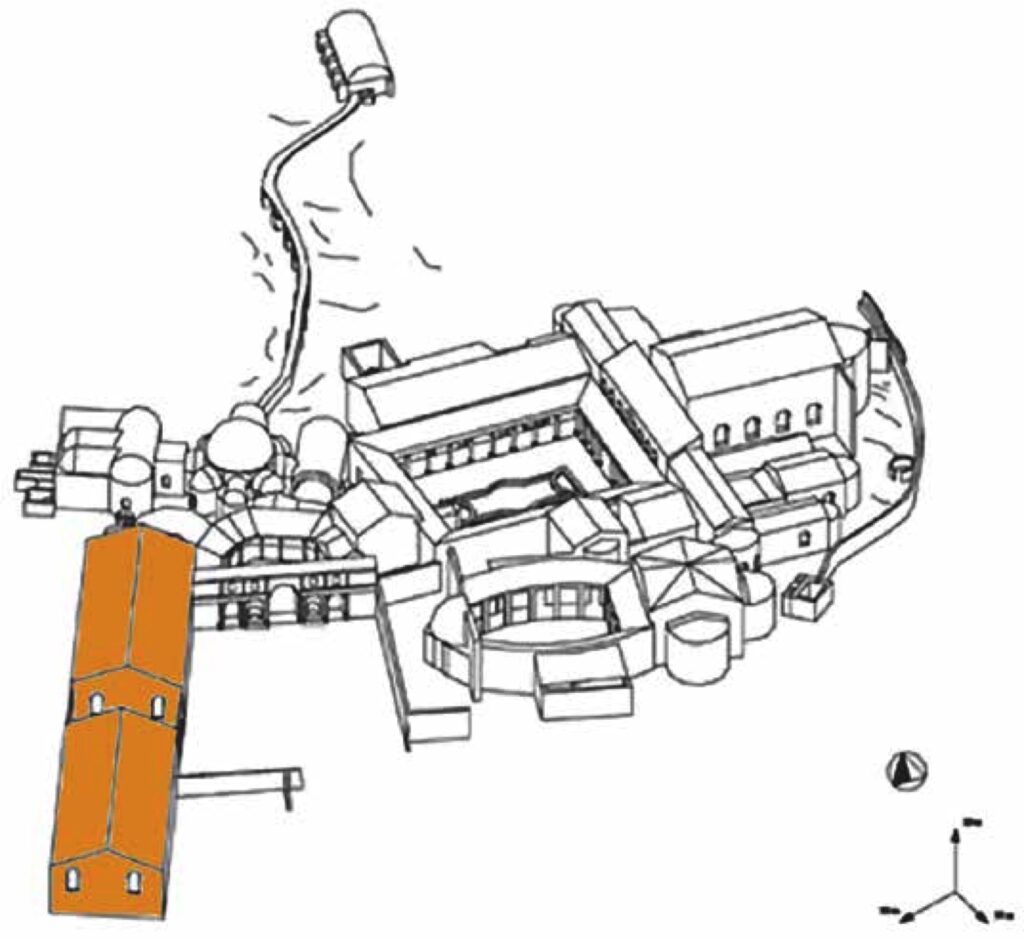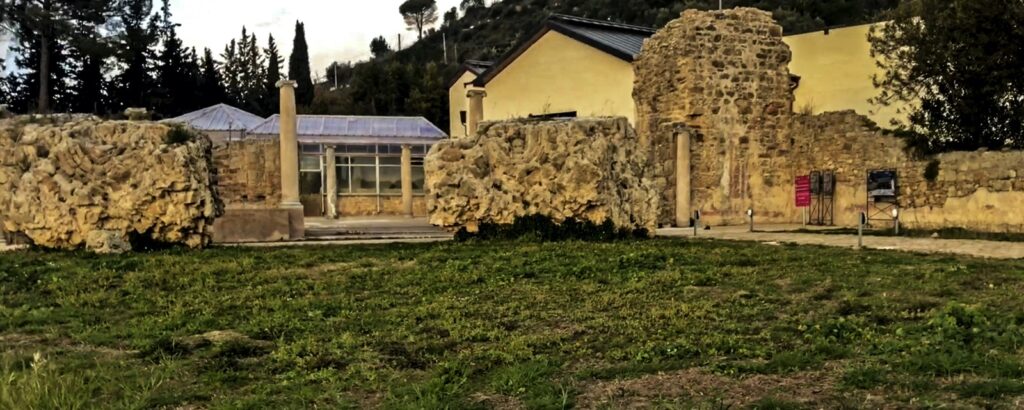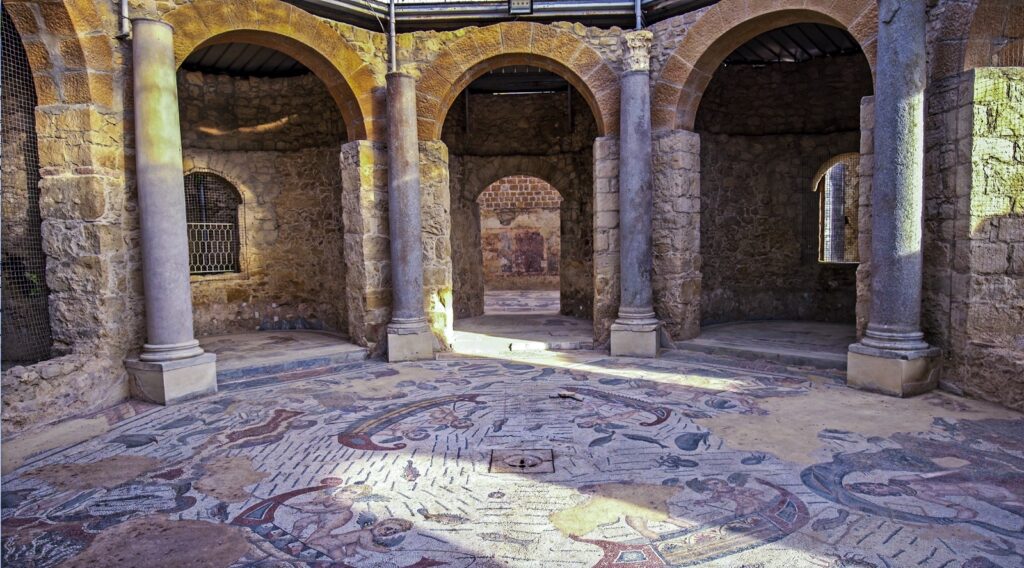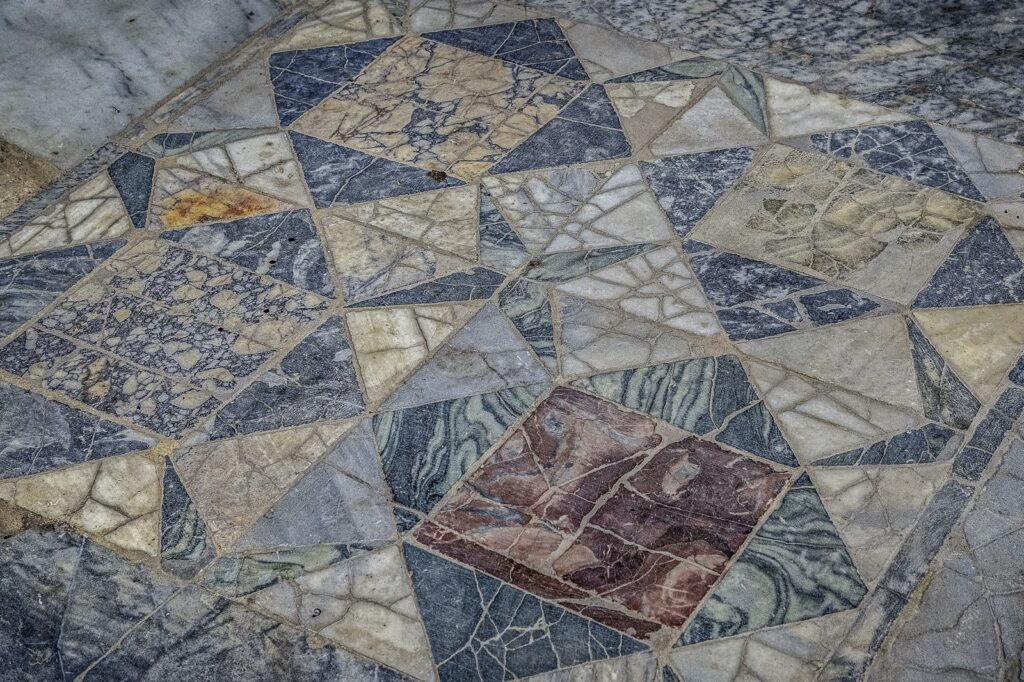The layout of the late antiquity domus on three large levels,which follow the nature of the terrain, cannot overlook the importance of the duration of the works that created the mosaics and architectural scenes.
Some clues give rise to the assumption that it was executed with no initial unitary project, either because of the layout of a number of rooms or the style of the depictions of the mosaic ornaments, though the contemporary use of two different stylistic registers is recurrent in Roman artistic tradition. We cannot overlook the possibility that the structure of the late antiquity residence was built in a short time or that it was enlarged from the original nucleus at a later stage.
Starting from the
monumental portal
 and the thermal baths,
and the thermal baths,  we go up one level to the
peristyle
we go up one level to the
peristyle
, and then even higher to the
biapsidal ambulacrum
of the “great hunt”
 that leads to the main apartments, but above all, to the most important place in the villa, the
basilica
that leads to the main apartments, but above all, to the most important place in the villa, the
basilica
.
 The imposing space that distinguishes it is embellished by the presence of precious marble slabs laid on the walls and floor,
The imposing space that distinguishes it is embellished by the presence of precious marble slabs laid on the walls and floor, laid with a slight inclination to compensate for the slope of the ground.
laid with a slight inclination to compensate for the slope of the ground.